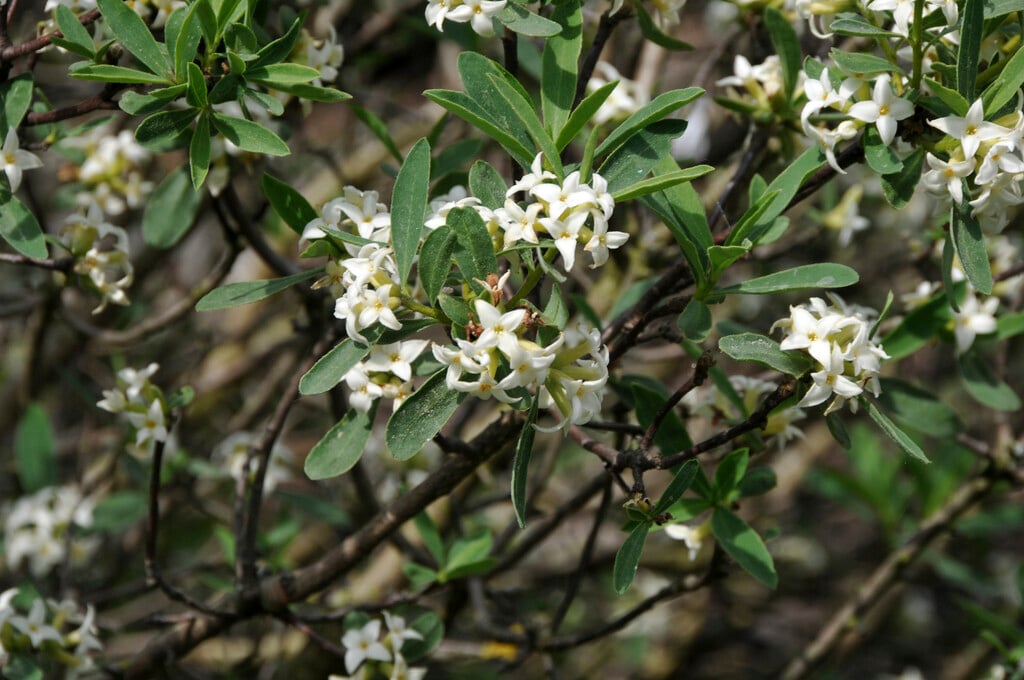Daphne alpina
alpine daphne
An upright, deciduous shrub to 60cm, with downy shoots and hairy, grey-green leaves to 4cm long. In late spring and early summer it produces clusters of fragrant white flowers at the stem tips; these are followed by fleshy, spherical, orange-red fruit

Buy this plant
Size
Ultimate height
0.5–1 metresTime to ultimate height
5–10 yearsUltimate spread
0.5–1 metresGrowing conditions
Moisture
Moist but well–drainedpH
Acid, Alkaline, NeutralColour & scent
| Stem | Flower | Foliage | Fruit | |
| Spring | White | Green | ||
|---|---|---|---|---|
| Summer | White | Green | ||
| Autumn | Green | Red Orange | ||
| Winter |
Position
- Full sun
Aspect
East–facing or South–facing or West–facing
Exposure
Sheltered Hardiness
H6Botanical details
- Family
- Thymelaeaceae
- Native to GB / Ireland
- No
- Foliage
- Deciduous
- Habit
- Bushy
- Potentially harmful
- TOXIC if eaten, skin irritant. Wear gloves and other protective equipment when handling TOXIC to pets - see the HTA guide to potentially harmful plants for further information and useful contact numbers
- Genus
Daphne can be deciduous or evergreen shrubs with small, usually very fragrant tubular, 4-lobed flowers, often followed by colourful berries
- Name status
Correct
- Plant range
- Europe
How to grow
Cultivation
Grow in moist but well-drained, humus rich soil in full sun. Mulch annually in spring with well-rotted organic matter to keep the roots cool. See daphne cultivation for further information
Propagation
Propagate by sowing seed in containers in a cold frame as soon as ripe; take semi-ripe heel cuttings
Suggested planting locations and garden types
- City and courtyard gardens
- Patio and container plants
- Rock garden
- Low Maintenance
- Flower borders and beds
Pruning
See pruning groups 1 and 8; keep pruning to a minimum
Pests
May be susceptible to aphids
Diseases
May be susceptible to honey fungus (rarely), phytophthora root rot, fungal leaf spot and virus diseases
Get involved
The Royal Horticultural Society is the UK’s leading gardening charity. We aim to enrich everyone’s life through plants, and make the UK a greener and more beautiful place.